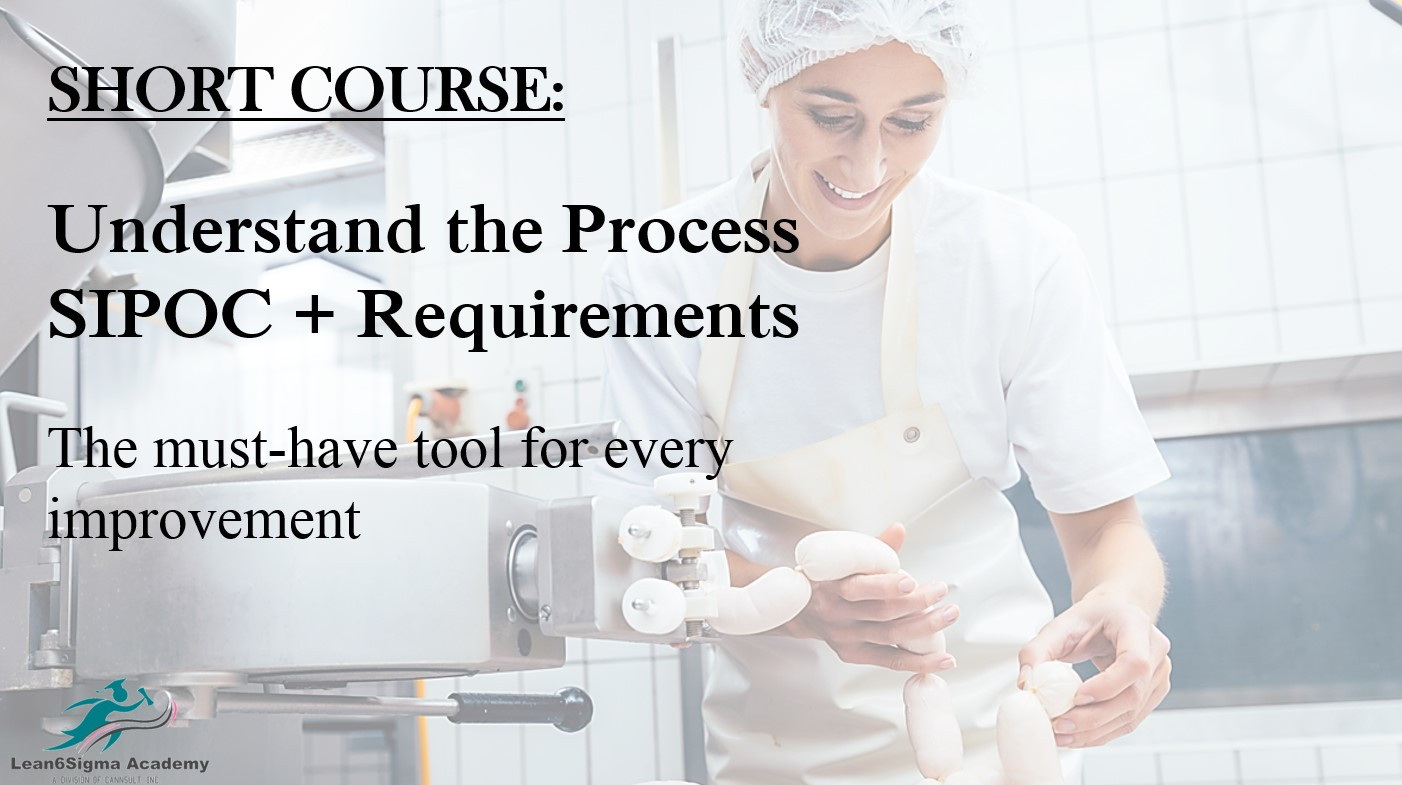SIPOC
Project Management
Step-by-step guidance
Understand your process before changing it!
Supplier, Input, Process, Output, Customer
Purpose and Benefits of SIPOC
The role of feedback and revisions.
Course Content:
Introduction to SIPOC and Requirements in Lean Six Sigma
Explanation of the significance of SIPOC and requirements gathering in process improvement projects.
The role of these tools in project scoping and stakeholder alignment.
Key Concepts in SIPOC and Requirements
Understanding key terms and concepts:
SIPOC components (Supplier, Input, Process, Output, Customer)
Requirements vs. preferences
Stakeholder analysis
How these concepts relate to SIPOC and requirements gathering.
Purpose and Benefits of SIPOC
Discussing the primary purposes and benefits of creating a SIPOC diagram.
How a well-defined SIPOC sets the stage for project success.
Creating a SIPOC Diagram
Step-by-step guidance on how to create a SIPOC diagram, including identifying suppliers, inputs, processes, outputs, and customers.
Best practices for documenting SIPOC information.
Hands-On SIPOC Exercise
Participants work on creating a SIPOC diagram for a sample Lean Six Sigma project, applying the principles and techniques discussed.
Review and discussion of SIPOC diagrams.
Purpose and Benefits of Requirements Gathering
Discussing the importance of gathering and documenting project requirements.
How clear requirements ensure alignment with stakeholder needs.
Requirements Gathering Process
Techniques and steps for gathering requirements effectively, including:
Identifying key stakeholders
Conducting interviews and surveys
Documenting and prioritizing requirements
Hands-On Requirements Gathering Exercise
Participants engage in practical exercises to gather and document project requirements.
Discussion and review of requirements gathered.
Requirements Validation and Verification
Strategies for validating and verifying requirements with stakeholders.
The role of feedback and revisions.
Real-World Applications
Sharing case studies and real-world examples of effective SIPOC diagrams and requirements gathering in Lean Six Sigma projects.
Common Mistakes and Pitfalls
Identifying and avoiding common errors in SIPOC creation and requirements gathering.
Tips for successful project scoping and stakeholder alignment.

Workbook - download and Print, or use digitally to complete tasks and interactive exercises

The Affinity Diagram - One Point Lesson

Kano Analysis - One Point Lesson

SIPOC - One Point Lesson

Tree Diagram One Point Lesson

Voice of the Customer Translation Matrix - One Point Lesson

SIPOC Templates

Narrated video instruction

0 Reviews
Riaan is a dynamic leader, coach, facilitator, Lean Six Sigma Master Black Belt with over 20 years of hands-on experience driving business results. Riaan is highly skilled and has worked across diverse industries internationally. With a degree in Chemical Engineering, Riaan started in the major breweries and bakeries in South Africa and was so dedicated to his work that he was often known to take his work home with him.
